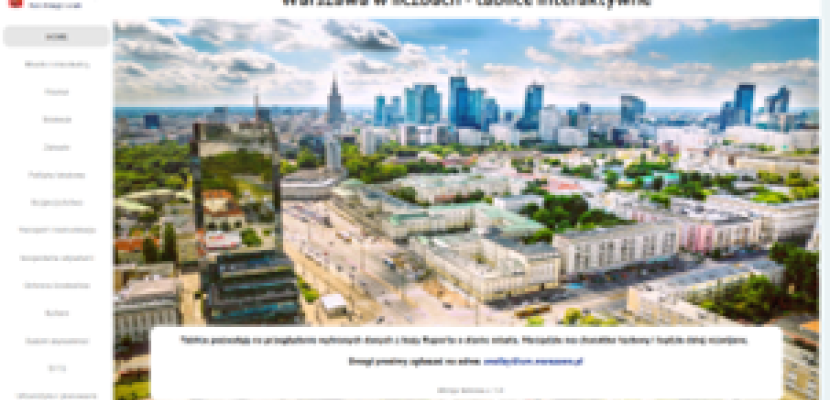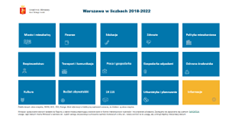
Warsaw in Numbers - Interactive Dashboard for City of Warsaw

About this good practice
The interactive dashboards were created to address communication inefficiencies between the city and its residents. Before their introduction, reports were less engaging, hindering public interaction. In Poland, each commune is legally required to present an annual report on its activities. Traditionally, these reports were in PDF format, limiting engagement and accessibility. The City of Warsaw aims to enhance transparency and public participation by presenting data through interactive dashboards, allowing residents, NGOs, and journalists to explore detailed municipal data. This initiative supports the city's strategy to build a centralised, open-access database.
The dashboards offer a dynamic way to present urban data, sourced from municipal units, and updated regularly. This approach motivates city departments to contribute more data, enhancing transparency. The dashboards allow residents to filter and analyse data, fostering informed discussions about city development. The main issues addressed include limited public engagement and slow access to city data. The initiative is managed by the City of Warsaw, with a focus on training staff in Business Intelligence and data visualisation. The practice supports data-driven policy transformation, providing a platform for innovative public administration solutions. It improves access to public information, benefits all stakeholders, and aligns with the city's strategy to promote open data and digital engagement.
Resources needed
Service is funded by the City of Warsaw. Team of analysts trained in Business Intelligence and data visualisation manages the dashboards.
There is no additional dedicated funding from the provincial budget. 5 employee manages the system within their day to day duties (around 720000 PLN per annum).
Evidence of success
The dashboards have from several hundred to several thousand views per month - the interest is variable and seasonal. They are used by professionals, journalists, scientists and private companies and also internally by other employees within the city hall.It has increased public report attractiveness with positive feedback from users. The service accelerates access to public information and encourages city units to participate in data sharing, fostering a culture of transparency
Potential for learning or transfer
It serves as a model for other cities aiming to improve public service quality through data-driven approaches. Key success factors include stakeholder collaboration, clear methodologies, and adaptability. Challenges include maintaining data format consistency and quality. The dashboards have increased public report attractiveness, with positive feedback from users. Website visits are monitored, and data is continuously updated based on user input. The practice aligns with Interreg programme goals, supporting data-driven public services, citizen engagement, and open data initiatives.


